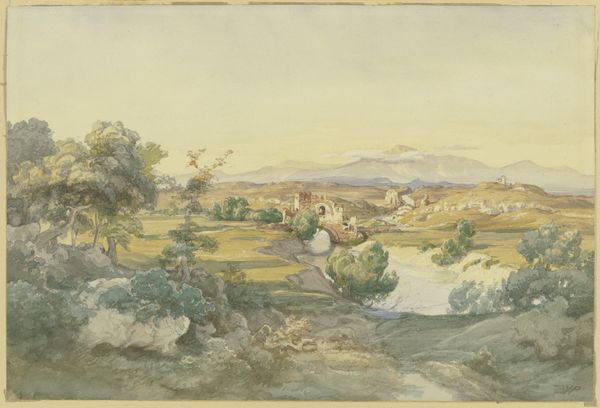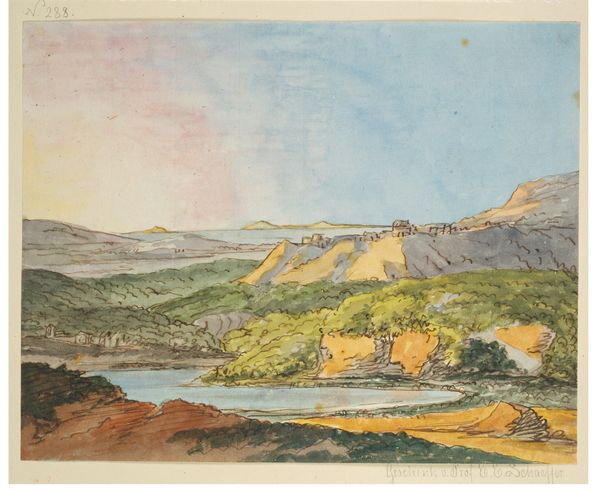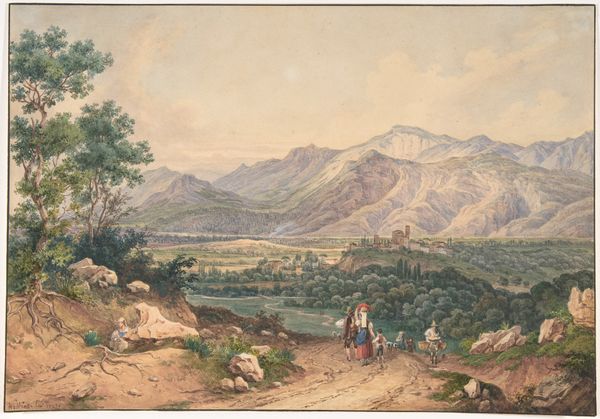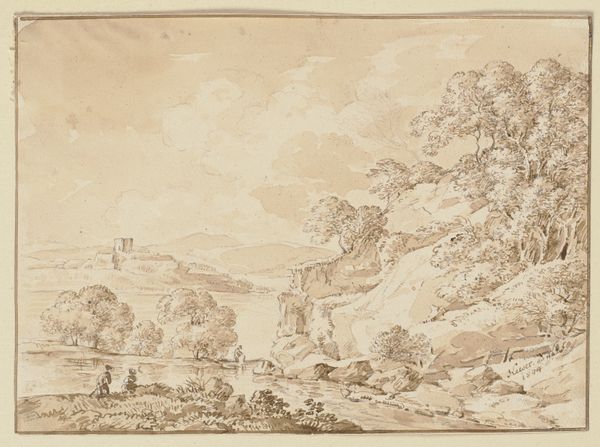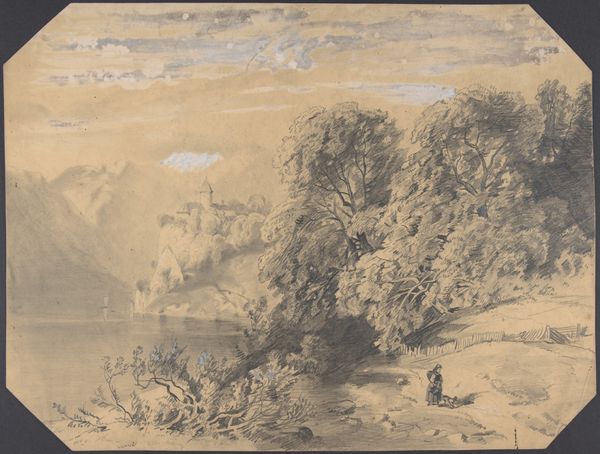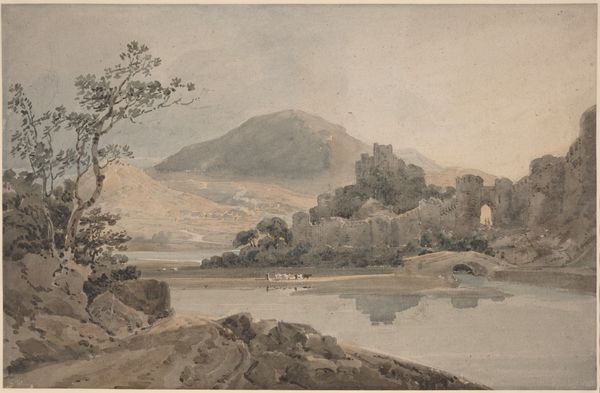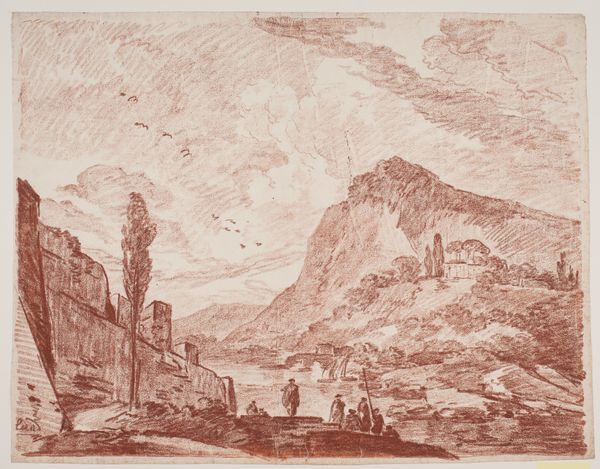
Italian Mountain Scene with River and a Building to the left 1849
0:00
0:00
drawing, plein-air, watercolor
#
drawing
#
water colours
#
plein-air
#
landscape
#
watercolor
#
romanticism
#
watercolor
Dimensions: 213 mm (height) x 322 mm (width) (bladmaal)
Editor: This watercolour, "Italian Mountain Scene with River and a Building to the left," created in 1849 by Lorenz Frølich, has a very serene quality. The pale colours and the open composition create a sense of expansive calm. What can you tell me about this piece, and how does it reflect its historical context? Curator: Well, this work immediately evokes the Romantic movement, but with a specific twist relating to the institutional pressures on artists at the time. We see the emphasis on sublime nature characteristic of Romanticism. But consider, this was created at a time when academic painting, supported by state institutions, prized historical and allegorical subjects. So, what does choosing a simple landscape, created en plein-air, suggest about Frølich’s artistic choices? Editor: Perhaps it indicates a desire to break away from the traditional subjects and engage directly with the environment? Curator: Precisely! It's about asserting artistic freedom. The 'plein-air' aspect is key – painting outdoors became associated with authenticity and a direct experience of nature, almost a rebellion against studio-bound, academic art. Think about how galleries were increasingly exhibiting landscapes at this time, too. The market, and therefore the public’s taste, was shifting. It also speaks to the rise of travel as something accessible to more than just the aristocracy. How might the 'Italian' aspect factor into this, do you think? Editor: Italy was a popular destination. Perhaps Italian scenes provided a romanticized vision for an increasingly urbanised public? Curator: Good point. The idealised Italian landscape became a stand-in for lost pastoral simplicity. The placement of his architectural element within the composition helps bring this interpretation of Romanticism to life, as it adds visual proof of mankind's positive interactions within such a scene. Editor: That gives me a fresh way of understanding the dialogue between the landscape, the artist, and the evolving art market. Thanks! Curator: Indeed. And that’s a reminder to us to consider the social conditions shaping what and how art is produced and appreciated.
Comments
No comments
Be the first to comment and join the conversation on the ultimate creative platform.


